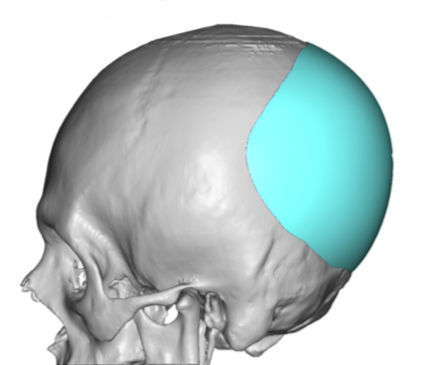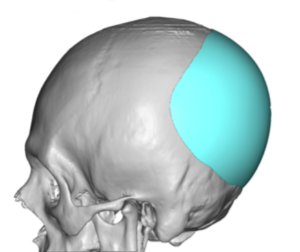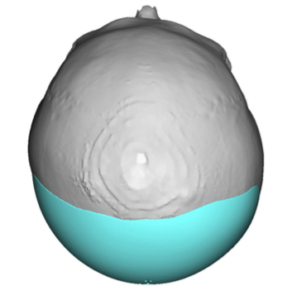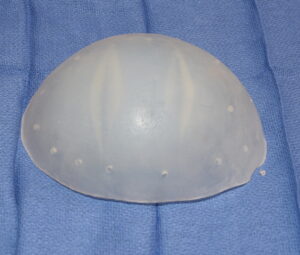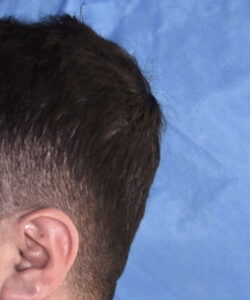Background: Plagiocephaly is a common and most recognized developmental skull shape deformity. It is typically seen as a flattening on one side of the back of the head that wraps around the side onto the posterior temporal region. This is why the ear on the affected side is always displaced a bit more forward. In some cases the opposite more normally developed side is concurrently protrusive…but this is uncommon and poses a more difficult aesthetic challenge if present.
When correcting the plagiocephalic back of the head the typical approach is to create an implant design that corrects the flat side based on the fullness of the other side. (mirror image) While this works well for many, some cases of plagiocephaly are associated with degrees of flatness on both sides. Such that even the more projected side is too flat. This can be appreciated in both right and left side views where both sides look too flat. Often with this flatness the crown height is high. (tall)
In augmenting a flat back of the head, including the good side, the pertinent design questions become how much augmentation is needed and what is the level of the maximum projection line.
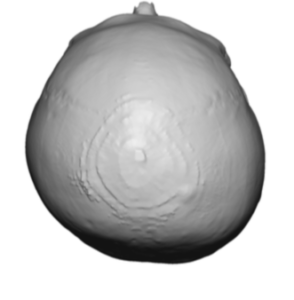
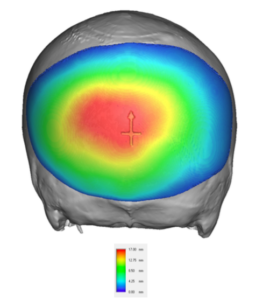
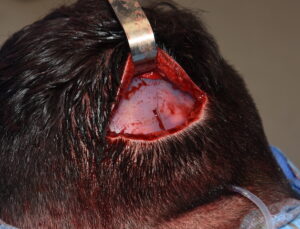

Case Highlights:
1) Plagiocephaly most commonly affects the back of the head and can be associated with an overall flatness as well.
2) A custom skull implant design can simultaneously correct back of head asymmetry as well as provide overall increased back of head projection.
3) The volumetric addition to the back of the head should generally not exceed 150cc unless a first stage scalp expansion has been done.
Dr. Barry Eppley
Indianapolis, Indiana

